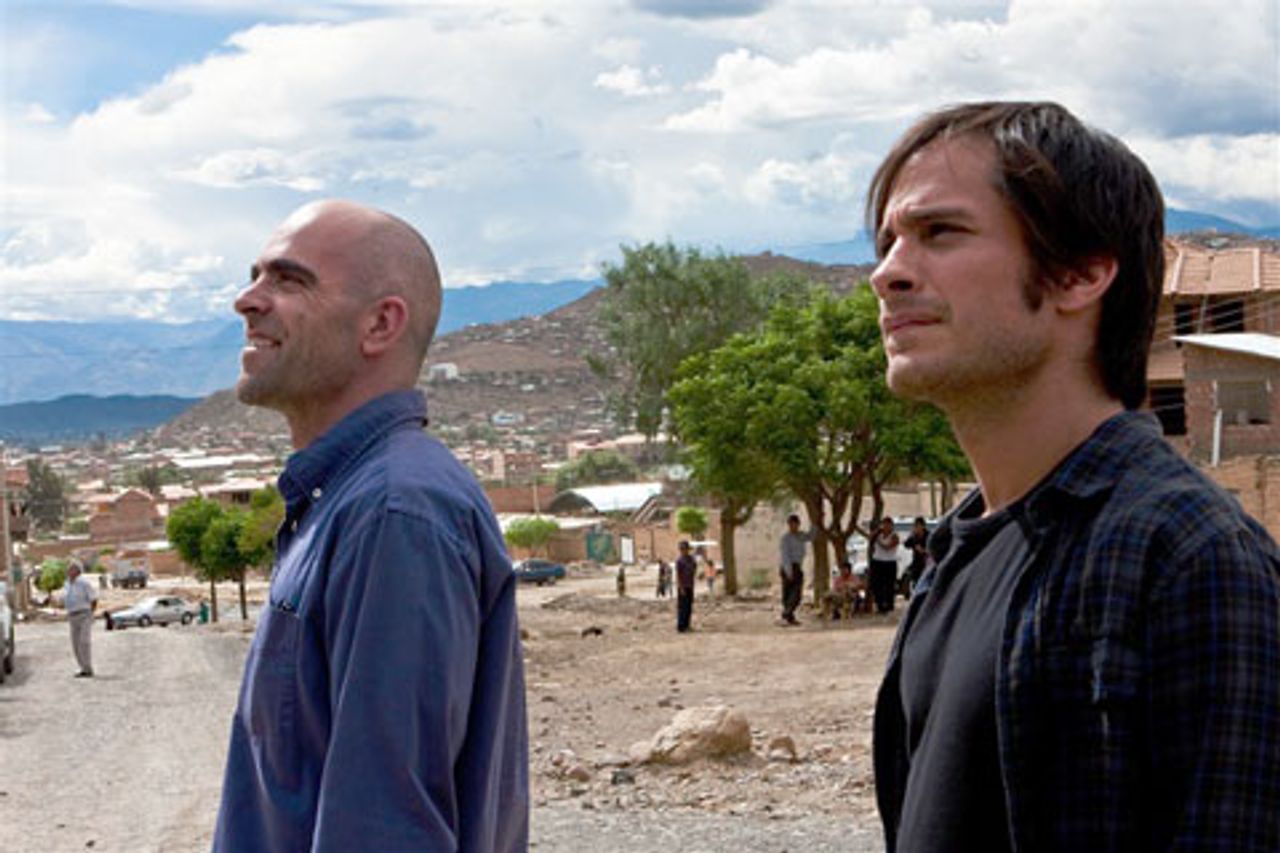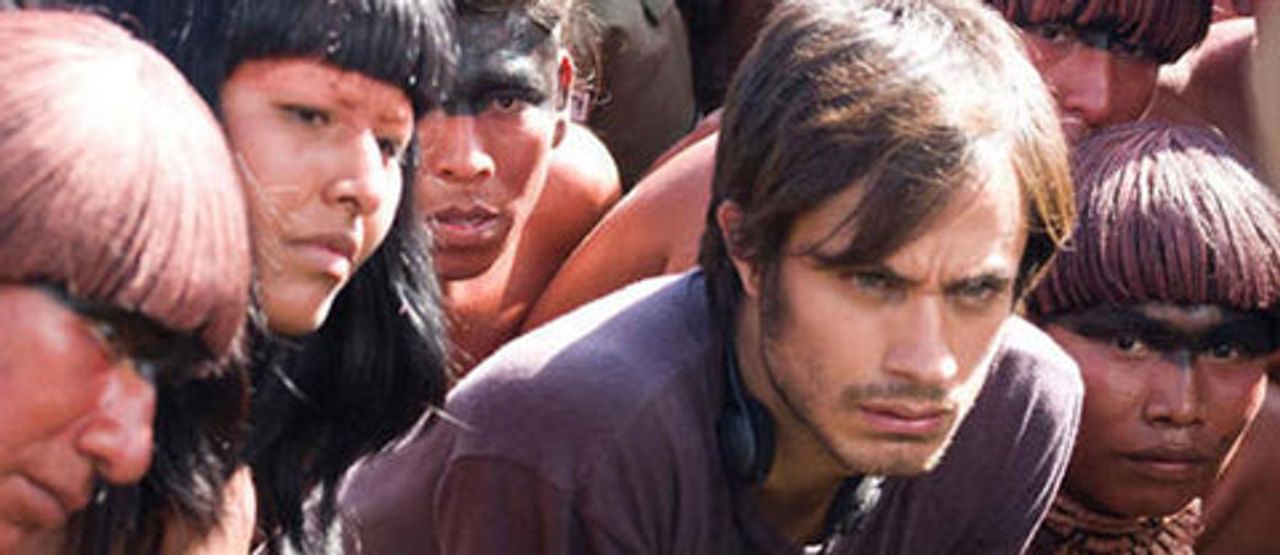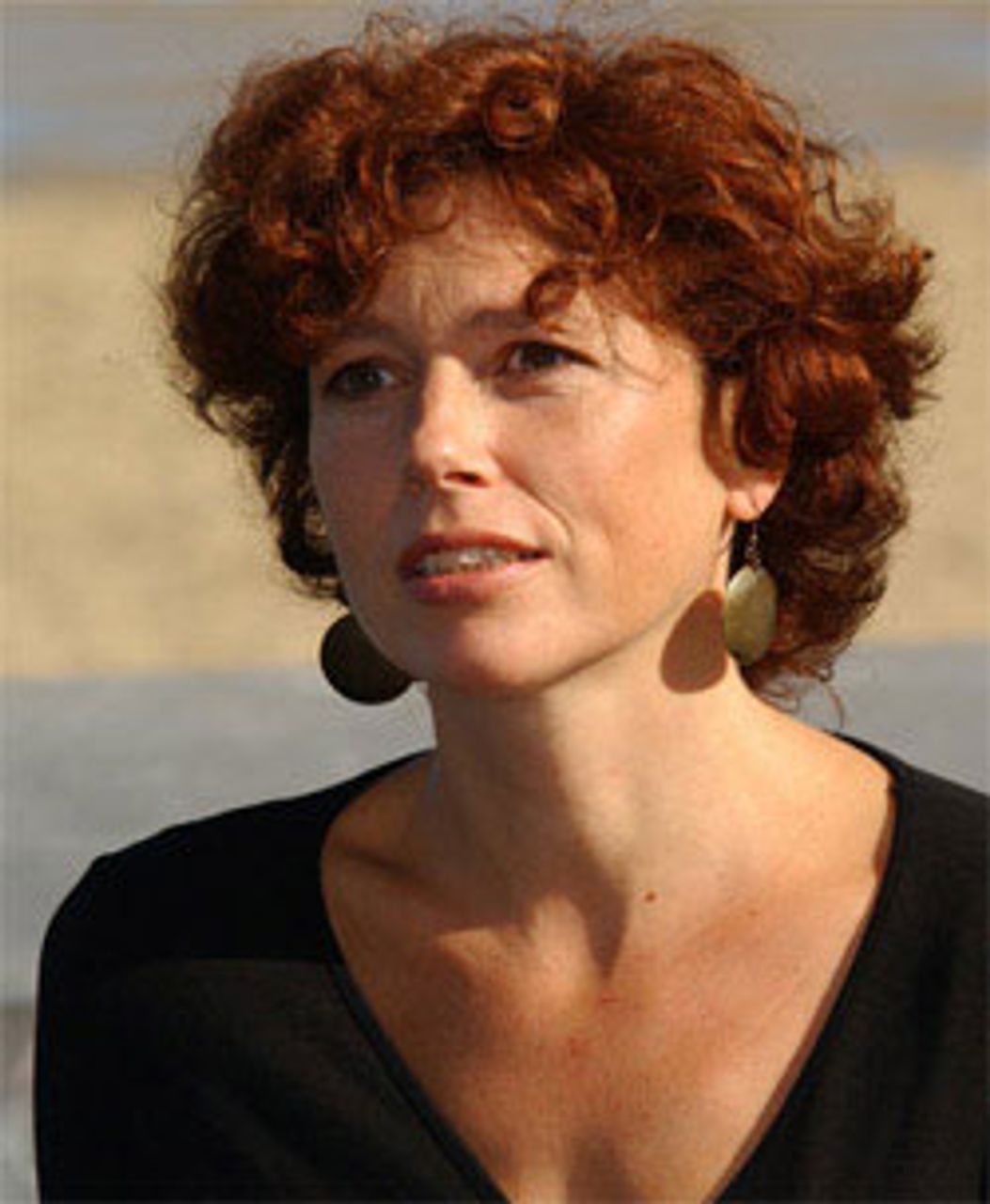This is the third of a series of articles devoted to the recent Toronto film festival (September 9-19). Part 1 was published on September 23 and Part 2 on September 28 .
 Even the Rain
Even the RainEven the Rain (Tambien la lluvia), from director Icíar Bollaín (Spain) and screenwriter Paul Laverty (Britain), was one of the most serious and complicated films screened at the Toronto film festival. It takes on significant questions of history and contemporary social life, as well as artistic and human responsibility.
The film is set in Cochabamba, Bolivia, during the so-called “Water wars,” the struggle against the privatization of water, in 2000. A Spanish film crew has arrived in the area to make a film about Christopher Columbus and his encounter with the indigenous peoples of the “New World.”
 Even the Rain
Even the RainThe effective opening scene sets the stage. The production, at the behest of the youthful director, Sebastián (Gael García Bernal), has blithely advertised an “open casting” and hundreds of local people have lined up, waiting in some cases for hours. When the filmmakers, having chosen the people they need, try and dismiss the rest of the crowd, trouble erupts. One “ringleader” in particular insists, “You have to see us!” The director gives in, and eventually casts the troublemaker, Daniel (Juan Carlos Aduviri), as a leader of the indigenous resistance to Columbus, despite the misgivings of the hard-bitten producer, Costa (Luis Tosar).
The company has chosen Bolivia, the poorest country in South America, although the indigenous people are the “wrong” ones from the historical point of view, for economic reasons. Extras earn only $2 a day here, Costa boasts over the telephone to one of the film’s financial backers in the US.
Sebastián has ambitious plans. He centers his film on Bartolome de las Casas (Carlos Santos), a Dominican priest horrified by the Spaniards’ treatment of the native peoples, and Dominican friar Antonio de Montesinos (Raúl Arévalo), the first to denounce the practices openly, in 1511. Montesinos declared in a sermon delivered on Hispaniola (now the Dominican Republic and Haiti) that the Spanish on the island were “all in mortal sin and live and die in it, because of the cruelty and tyranny they practice among these innocent peoples.”
The production within the production as well involves shooting complicated scenes of confrontation and brutality, including the crucifixion of Indian rebels, set deep in the jungle.
Difficulties arise in filming the Columbus movie, and some sequences prove impossible. More threatening to the crew, however, is the outbreak of social protest in the area, as the local people oppose the privatizing of their water supply and price increases of 300 percent. “They steal, sell everything…even the rain.” Daniel becomes a leader of the protests. The filmmakers beg and try to bribe him to remain out of the demonstrations, which involve battles with the police, until the shooting is completed. He apparently agrees, but his commitment leads him to get arrested. In an effort to release him, Sebastián and Costa negotiate with the cops.
The situation in the area, popular blockades and police-military violence, leading to bitter street fighting in Cochabamba, makes going on with the film almost impossible. The backers are jumping ship. Most of the actors want to leave. Sebastián implores them to continue, arguing that protests come and go, but his film, with its demystification of history, will endure forever. His Columbus (Karra Elejalde), a middle-aged actor who drinks too much and has been a constant critic of the director and his hubris, is one of the few who sticks with it. The cynical Costa has a difficult decision to make when Daniel’s wife begs him to help her daughter, wounded in the police attacks.
 Icíar Bollaín
Icíar BollaínThe film is very well done. Working under difficult conditions, the director, actors and crew accomplished a great deal in only five weeks of shooting. Tosar, Bernal, Elejalde and Aduviri in particular are remarkable. To Icíar Bollaín’s credit, no element of the drama or the social situation feels neglected.
The scenes of the popular struggle against the corporate assault are moving, as are the efforts of the indigenous people to bring the history of their historical suffering to light.
Laverty and Bollain point to the contradictions of filming in a poor country, the danger of exploiting the population, without moralizing or drawing easy conclusions. In the effort to tell a substantial truth, an enduring truth, as Sebastián insists, are there shorter-term niceties and obligations that can and perhaps need to be ignored? Where does one cross the line? When the fictional filmmakers argue mildly at city hall in support of the protests and against the conditions of the poor in Cochabamba, the town’s mayor points out they are paying their extras $2 a day, and that both parties are working on similarly “tight budgets.”
Sebastián and Costa didn’t invent the colonial situation or the present relationship between economically advanced and backward countries—should those conditions prevent them from making their film? Does it not require, in fact, an extraordinary level of historical knowledge and political sensitivity to navigate a situation such as they face in Cochabamba?
 Paul Laverty
Paul Laverty“Complication” is a word that came up often in a conversation with screenwriter Paul Laverty in Toronto September 13, as well it might have. There are relatively cut and dried issues in Even the Rain, including some of the historical ones, but the treatment of the crew and its complex response to the social crisis is especially concrete and compelling. For once, it must be said, the transformation of a character (Costa, the producer) in the direction of exhibiting greater humanity, taking place under definite social and psychological conditions, is accomplished convincingly.
Laverty explained that the film originated through his contact with Noam Chomsky and Howard Zinn (to whose memory the film is dedicated), the well-known left American academics. “They were looking for a writer to do some stories inspired by [Zinn’s] The People’s History of the United States,” Laverty explained. “Howard was really obsessed with the arrival of Columbus, and what that set in motion, which obviously interested me too.”
Laverty set a first version of the script entirely in the fifteenth and sixteenth centuries, “with Bartolomeo de las Casas as a central character. But films when you go far back in history often can seem so distant, so dead. You usually get the language wrong. There are so many details that don’t look convincing.” Ultimately, Laverty rewrote the entire film, “and I thought one way we could do it, was to make a film about people making a film about Columbus.”
He went on: “But the idea of just making a film about a film doesn’t really get my blood going. I was also fascinated by the ‘water wars’ in Cochabamba [in 2000]. I wondered whether I could incorporate what happened 500 years ago, that massive exploitation, that viciousness, tell it through a modern consciousness, and mix it with what I consider to be much more sophisticated exploitation, the stealing of resources today, which is all done through corporate law, international treaties, powerful nations and trading blocs.”
Laverty paid lavish tribute to the work done by the film team. “It was very, very hard. I’ve got great respect for the director and the producer.… To shoot a period piece and go to Bolivia is massively expensive. And they went there and they did it all by the skin of their teeth.
“The devil is always in the details. They had to find a group of indigenous people who were prepared to get their kit off and not feel ridiculous. They had to get the people’s trust, they negotiated back and forth, it took an enormous length of time. They eventually trusted and believed her [Bollain]. Also, it was a challenge to find people in Cochabamba who were willing to relive the experience of 2000, so they didn’t perform like exotic extras, but actually became the real people who took control of their own destiny.
“There were enormous difficulties. They shot in the jungle, they just got it done. It was an area where there’s lots of drugs and other problems. The cast members were held up at gunpoint at one point. Just to keep on plugging away and get it done in 33 days. Hollywood would take six months to do that film.… The Bolivian crew! They’d hardly had any experience. There are hardly any indigenous films or television. The crew worked their asses off. I would love it if you would mention that. It was very humbling. They said, we think this material is important, and they worked like hell. To see all of this coming together and being made after 10 years of effort is extraordinary. Even if audiences throw tomatoes at us, I have a feeling of great satisfaction.”
I don’t think that’s likely to happen. I suggested to Laverty that there were many intriguing issues treated in the film, but one of the most interesting elements was the evolution of the producer, Costa. I said, “I thought his internal revolution was convincing. The film reminds you that people are affected by social life, and who is to say that a transformed situation would not bring out extraordinary artistic and moral qualities in people whom you look at today as being rather cynical and unfeeling?”
After considering that for a moment, Laverty replied: “I think I’m an optimist by nature, but one whose optimism is tempered by the terrible brutalities we see. I think there’s a great crisis in criticism as well at the moment. Any film that actually deals with something difficult in society or politics has to be denounced. It’s only cool to be cynical and distant. I think human beings are moved and have a great capacity for empathy once they know what is going on. That certainly is my experience.
“The producer of the film within the film, Costa, starts off by saying, I don’t give a damn about what happened yesterday, much less 500 years ago. Gradually and imperceptibly, once you begin to see and feel the content of other people’s lives, when you look into their eyes, when you know their names, when you see their families, I think it’s only human to begin to care. We have the capacity to imagine other people’s lives, and I think that’s why we are interested in stories.
“Costa doesn’t plan to get involved like this, but he’s touched in a very personal way. He doesn’t become a revolutionary, far from it, but he understands what these people are trying to do and he respects it, and he can’t walk away. Other people would have, but this character can’t.”
Writing on social problems and political questions as he does, I pointed out to Laverty, is a complicated business. Art also involves spontaneity, surprise, the things one doesn’t know about. Even when it comes to a social issue, “you can’t simply write the obvious, you examine what is more problematic, troubling, what you don’t fully understand.”
“People and life are full of contradictions,” he responded. “And I think you put your finger on it. At question-and-answer sessions, I’m always asked, why don’t you do something about Cuba? Why don’t you do something about Afghanistan? You cannot write a screenplay to order. It’s not a political thesis. You need to find a way inside the story, the human situation. The best stories are the ones where you have an interesting premise and all the complications and contradictions unfold from the complexity of the situation. Films are never meant to give simple answers.
“We [Ken Loach and Laverty] did a film called It’s A Free World [2007]. I wanted to look at the ‘Anglo-Saxon economic miracle.’ It makes you laugh now, but at that time everybody was saying this was the model to follow—I wanted to pick up a stone and get underneath it. So I talked to workers out by the railroads, and roundabouts, short-term contracts. I couldn’t find a way into the story until Angie [who runs a business recruiting immigrant workers for temporary jobs], and all her contradictions, burst into my mind. Then, instead of telling the story from the point of view of the immigrants, you tell it from the point of view of someone who exploits them. It became much more complicated, much more interesting.
“Black and white is not interesting. When you find the shades and complexities, and you find a story with all those levels, that’s most interesting. Otherwise, it’s dead on the page. And if it’s dead on the page to me as a writer, it’s going to be dead in the water with the viewer. So you hope for a bit of inspiration.”
I spoke to him about director Ken Loach, with whom he has been making films for 15 years. “Ken Loach is a much respected figure,” I said. “I’m not uncritical of his work, I’ve admired some films, been very critical of others, but his name comes up among serious filmmakers. He has stood for a continued social commitment to the truth about social life, the truth about the working class in a very difficult period. It’s not a small thing.”
Laverty commented, “Ken doesn’t romanticize workers, sometimes they are rough, crude characters in his films, but there are also those who are smart and sharp, and understand realities better, and that’s my experience of life. The people who best understand the contradictions in their own lives. There are very few filmmakers who are prepared to do that. The stereotypes are boring, and untruthful.
“There is great respect for Ken. The European Film Academy gave him an award for his career in Berlin in 2010. It was amazing. These are often show business types of events, but this was genuine, the respect, the ovation that went on for ages. He genuinely is a modest man. With many directors, modesty is not the first thing that comes to mind, they have to fight so hard for their projects.”
We spoke about some of the problem in filmmaking today, including the generally miserable level of commercial films. He remarked, “So many films today are moronic, I just can’t stand it. We have to democratize film space. At the time our last film—Looking for Eric—came out in Spain, there were two Hollywood films showing there, with 600 copies each. That’s 1,200 copies, 50 percent of the screens in Spain. We want more choice, we want more space. Everything is crushed by it, this huge juggernaut.”
To be continued
